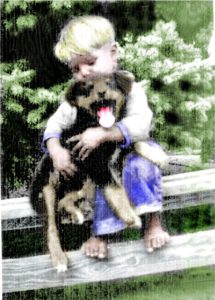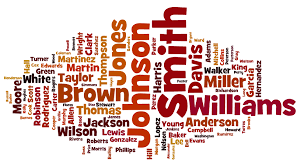Become a detective

If you’ve been at the search for long you have undoubtly collected boxes of pictures along the way. Most online history software lets you upload your pictures to the tree. Having a picture to put with your ancestors profile in the tree helps to bring them to life and gives you a feeling of knowing them just a little better. But what happens when someone forgot to put a name or date on the back of the photo? Now you get to spend hours trying to find who it is in that Photo and take to step to becaome a detective to unravel the mystery.
Finding historical photos is easier now than ever. Some of the same websites you’ve searched for genealogy information also have databases of old photos contributed by members—some of whom may be your distant cousins. Local historical societies, state archives and similar organizations, realize the power of pictures and are placing digitized historical photos and illustrations in online collections. Photo-sharing sites encourage folks to post photos of all ages.
There are all kinds of groups geared towards genealogy on facebook, and they are easy to join. Just click the join button and answer a few questions and vola! There are groups that help restore the pictures, some for free. There are groups to help you in your searches. I have met many a cousin from the same family lines in these groups. There are groups where you can upload your pictures to ask for help in identifying ancestor and there are groups looking for family members of lost family photos. Actually, facebook has a group for just about anything these days.
“A photo is a window into the lives of your  ancestors.”
ancestors.”
There are several sites that have to do with identifying and finding lost photos. Most of your major genealogy sites have archives of photos shared by others. By doing a simple keyword search of the surname you are looking for might get you your desired result. Some also allow you to upload photos you many have to the site to share with others or find help in identifying photos that have lost their names.
Ancient Faces The National Archives
Dead Fred The Library of Congress
Digital Public Library of America
The Ancestry Hunt has a huge list of places to search right down to the state that your ancestor may have lived.
ALWAYS REMEMBER
Copyright Considerations for Using Online Images
- Google gives you a photo search tool in Google Image Search. Type your search terms as you would for any web search, and Google will find images from web pages that contain those terms.
- Don’t overlook old newspapers as another potential source of ancestor photos. A graduation announcement, profile article or obituary might have included a picture.
- Browse street and building photos on websites such as HistoryPin and WhatWasThere, which let you look for images “pinned” to locations on a map. This is a really cool site that ties historical photos to google maps. I especially like this as I am not satisfied with just a name and date. I want to go where my ancestors have gone before me and visit the places they frequented. It give me a sense of belonging. Here you might find a picture of your ancestors house, or farm. It’s really cool. Check it out.
For more information on copyright and online photos, see the chart on the Cornell University website and study the Copyright category of the Legal Genealogist blog by Judy G. Russell.

Is an good place to find information about photographers which can help you in dating photo’s you may have questions about. They also offer for a fee a Comparison Service that might help you solve a mystery to an unidentified photo.
Offers a reverse search for finding your ancestor. Upload an image and search the database for likely matches. TinEye constantly crawls the web and adds tens of millions of new images to the TinEye index every month Try it …it’s sorta cool.
ASK A COUSIN
If you have a photo you can’t identify or place…ask a cousin or family member. They might just know something you don’t or might have the same picture in their collection. Two heads are better than one when trying to solve a mystery. Recently I was updating my files and came across a folder of unidentifed pictures that I had not a clue as to where they belonged. I have a group on facebook of all my cousins and I posted the pictures there for help and was able to find several of them simply by sharing with cousins.
Youtube.com is a good place to find videos that will help you in restoring old photos and dating them as well. Pinrtest also is a good source for this.
I hope this gives ya a little insight in where to hunt!
As always Happy Hunting! and don’t forget to leave me a little comment! I love hearing from ya!
The Pierce Family Historian


